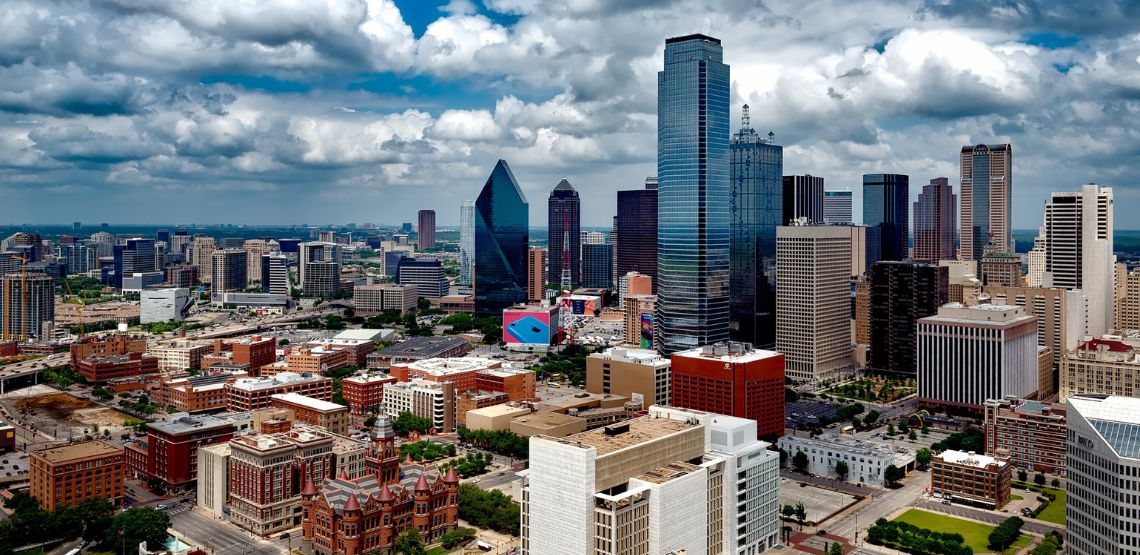What Are the Worst US Cities for Sinuses and Allergies?
Sinus problems can occur due to an infection, but sinus symptoms can also develop due to allergies. The mucus membranes surrounding your sinuses may become dry and inflamed, which can lead to common sinus problems.
Both indoor and outdoor allergens can increase your risk of sinus symptoms, which may include:
- Stuffy nose.
- Headache.
- Post-nasal drip.
- Facial pressure.
- Sore throat.
You can control some indoor allergens, such as dust and mold. Outdoor allergens are more of a challenge to deal with. The first step in helping curb your sinus problems due to your environment is becoming aware of your risk.
Some cities are worse than others for sinus issues. Below are eight of the worst cities for sinuses.
1. Scranton, Pennsylvania
Allergies often mean sinus issues. According to the Asthma and Allergy Foundation of America (AAFA), Scranton, Pennsylvania, tops their list as one of the worse places to live for allergies.
Scranton has higher-than-average fall and spring pollen levels and cold winters. This makes it a challenging environment for people with allergies and sinus problems almost year-round.
2. Wichita, Kansas
Wichita, Kansas, is number 50 on the list of largest cities in the United States, but it ranks much higher than that in its pollen count. The AAFA ranks Wichita as the second worst place to live for allergies. Again, the culprit is the high level of pollen.
3. McAllen, Texas
McAllen, Texas, often makes the AAFA’s worst city list for allergies leading to sinus issues. A combination of climate and allergens can lead to allergic sinusitis. For people that live in McAllen, sinus issues may occur all year round. Grass and trees cause a high pollen count in the spring and summer.
In the fall, ragweed is a common allergen. McAllen’s mold count tripled in the last 15 years, which can also lead to sinus problems.
Related Search Topics (Ads)
4. Richmond, Virginia
Richmond, Virginia, tends to make the AAFA’s list of worst places to live with allergies each year, and 2022 is no different: Richmond comes in at number four. The high ragweed count in the fall is to blame for allergies that lead to sinus symptoms.
5. Oklahoma City, Oklahoma
Oklahoma City, Oklahoma, earns a place on AAFA’s list of worst places for allergies due to the high level of air pollution. Living where there is a high level of air pollution can increase your risk of sinus infections and chronic sinusitis.
According to the American Lung Association, Oklahoma City has some of the most widespread and harmful types of pollution, including ozone and particle pollution.
6. Hartford, Connecticut
Hartford is one of two cities in Connecticut that make the AAFA top ten list of worst cities for sinuses. This eastern city is home to all types of trees, which cause a high pollen count. The change of seasons does not bring much relief as ragweed levels climb.
7. Buffalo, New York
Buffalo, New York, is also on the AAFA’s list of worst cities for people with allergies. In addition to a high pollen count, Buffalo has a dry spring season. That dry air allows pollen to hang around longer, which can increase allergy sinus symptoms.
8. El Paso, Texas
El Paso, Texas, is in the AAFA’s top 20 places that are the most challenging for people with allergies due to pollen counts. But what makes El Paso even more difficult for people with sinus issues is the dry climate.
El Paso has one of the driest climates in the United States. A dry climate can also dry out the mucus membranes in your sinuses. That may lead to thicker mucus that clogs the sinuses.
How to Manage Sinus Problems and Allergies
While you probably cannot just up and move out of your city, there are things you can do to decrease your risk of sinus issues. It is useful to determine if your sinus issues are acute or chronic. According to the Mayo Clinic, chronic sinusitis lasts three months or longer.
It is important to monitor the pollen or ragweed count in your local area. Check your local forecast, which often includes the pollen count. On days the pollen count is high, try to stay indoors as much as possible. If you do go outside, wash your face as soon as you come in to remove pollen from your face.
The American College of Allergy, Asthma, and Immunology recommends the following ways to treat sinus problems:
- Try a nasal wash: Use a neti pot and sterile saline to flush out the sinuses to remove pollen and moisten the mucus membranes.
- Use antihistamines: Antihistamines may stop allergy symptoms, including stuffed-up sinuses from developing.
- Take a decongestant: Decongestants may help treat sinus symptoms, such as a stuffy nose and facial sinus pressure. Be sure to ask your doctor if decongestants are right for you since they can dry out your sinuses, which may make mucus thicker.
- Consider nasal steroid sprays: Steroid nasal sprays decrease inflammation in the nasal passages. Both prescription and over-the-counter options are available.

